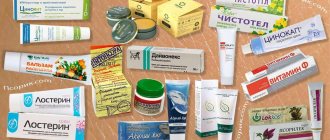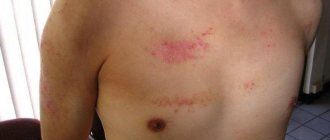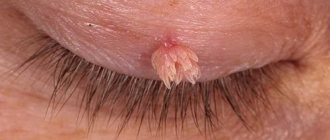Getting rid of psoriasis is not easy, almost impossible. The disease is chronic and manifests itself in the form of scaly plaques that cover different parts of the body. Forming on the skin, they cause pain and anxiety to the patient. The plaques are very itchy and a person scratching them increases the risk of further infection and spread of the disease.
The effect of infrared and ultraviolet radiation on the skin of psoriasis patients
Light therapy using ultraviolet and infrared radiation can reduce the intensity of psoriatic manifestations and transfer the patient into a state of stable remission - but only if these procedures are carried out not separately, but as part of complex treatment.
Ultraviolet has been used for a long time and its natural source is the sun. To improve the condition of the skin, patients with psoriasis were recommended to vacation in southern countries at least once a year.
But, since solar activity is not constant and its highest levels last for only a few months, the phototherapy technique is used. This procedure involves the elimination of affected cells using artificial UV rays that have a precise length.
A phototherapy regimen developed by the attending physician in case of psoriatic lesions of the body helps to increase the synthesis of cytokines - certain molecules that are responsible for the “survival” of cells. With infrared irradiation, tissues are heated under the influence of UV rays, which increases the rate of metabolic processes in the body. In addition to cytokines, during the process of IR exposure on tissue, there is an increase in the production of vitamin D and melanin.
Therapy of psoriasis using UV radiation and infrared rays must be carried out taking into account all safety rules in compliance with existing standards for the effects of ultraviolet and infrared waves on the dermal integument. On the face, the skin most often responds to external influences with an allergic reaction, so before starting any manipulations you need to make sure there are no side effects.
There are three spectra of wavelengths - A, B, C. Spectrum A and B are considered to be the most effective.
What is quartz treatment for psoriasis?
The history of this treatment method goes back to the distant past of mankind, when the miraculous powers of the sun's rays were just discovered. People have noticed that the light of the sun can reduce the rate of spread of various infections or even completely stop their existence. Science did not stand still; many radiation sources were invented that could imitate the real sun, almost completely copying its properties.
Modern devices are capable of disinfecting the air and destroying dangerous bacteria, which is an excellent addition to the medical and traditional treatment of various diseases. The wavelength range of UV radiation is between 205 and 315 nm, but the rays penetrate tissue to a depth of only about 1 nm (affecting only the surface of the skin and mucous membranes).
Quartzization involves treating the air with UV rays in order to destroy microorganisms, which is especially important in the autumn-winter period as an effective bactericidal agent and a source of ozone for the air. Of course, it is impossible to completely replace natural sunlight with quartz treatment, but it has proven itself to be excellent in strengthening the human body, increasing immunity , compensating for the lack of sunlight and enhancing the production of vitamin D.
The effectiveness of ultraviolet treatment
UV radiation is a therapeutic factor used as part of the complex therapy of psoriatic lesions.
By combining external agents with procedures and other components of complex treatment, it is possible to achieve greater positive dynamics due to the following therapeutic effects:
- resorption of psoriatic lesions;
- reducing the toxic effects of certain medications;
- reducing the duration of use of pharmacological drugs.
Often, in combination with phototherapy, 3-4 medications are used for internal and external use.
The advantages of ultraviolet radiation are the following effects:
- active stimulation of recovery processes;
- increase in nonspecific resistance and local immunity;
- actual absence of side effects;
- minimal risk of developing allergic reactions.
When combining UV radiation in combination with other therapeutic measures for psoriasis, the following results are achieved:
- decreased inflammatory activity;
- softening and gradual disappearance of plaques;
- increasing microcirculation and trophism of the skin.
Light therapy is one of the important components of the treatment of forms of psoriasis that are poorly responsive to classical therapeutic measures.
Harm of radiation and contraindications to light therapy
Light therapy may be contraindicated. Methods based on ultraviolet irradiation cannot be used if a person has the following conditions:
- Disorders of the functioning of the thyroid gland - thyrotoxicosis.
- Active phase of tuberculosis.
- The period of gestation and general exhaustion of the body.
- Excessive individual sensitivity of the body to light.
- Heart failure and arterial hypertension of 2 and 3 degrees.
- The use of a certain number of drugs - antibiotic, photosensitizing or dermatotoxic agents.
- Renal dysfunction – kidney failure.
It is necessary to refuse treatment of psoriasis using infrared radiation in the following situations:
- period of exacerbation of chronic diseases;
- tuberculosis in the active phase;
- blood diseases;
- individual intolerance;
- tumor formations;
- the presence of purulent processes without outflow;
- pregnancy and lactation;
- high risks of bleeding;
- menses.
Phototherapy is generally harmless, however, when it comes into contact with the skin, light rays can provoke redness - erythema. Under the influence of infrared rays, such a reaction (thermal) appears after a few minutes. When exposed to UV rays, redness (photoelectric) occurs after 2-8 hours. The intensity of the skin reaction depends on individual sensitivity. Subsequent irradiations reduce the degree of skin reaction to the effects of light fluxes and the severity of erythema decreases.
In some conditions, skin reactivity is altered:
- increases in the case of certain types of eczema;
- increases in a number of neurovascular pathologies;
- decreases in chronic infectious processes;
- with hyperfunction of the thyroid gland increases;
- rises when using sulfonamide medications;
- increases or decreases with lesions of parts of the central nervous system.
After 3-4 days, a tan appears in the irradiation zone, which can appear without preliminary erythema - in the case of repeated long-wave UV irradiation. The intensity of pigmentation (tanning) depends on the course of psoriasis.
Restrictions
Ultraviolet radiation for psoriasis is prescribed by a doctor solely based on the results of a thorough examination.
This technique is contraindicated in patients suffering from:
- renal (acute, chronic forms), heart failure;
- arterial hypertension (stage 3);
- hirsutism (excessive hair growth);
- tuberculosis;
- atherosclerosis;
- cachesia (extreme degree of exhaustion);
- oncological diseases;
- increased photosensitivity;
- predisposition to bleeding;
- mental disorders.
Carrying out phototherapy requires constant monitoring by a specialist who will monitor the treatment dynamics throughout the course.
Ultraviolet quartz lamps for the treatment of psoriasis at home
In the case of psoriasis, a quartz lamp affects damaged cells and is characterized by the following effects:
- bactericidal;
- anti-inflammatory;
- activates local immunity.
Before starting to use quartz or ultraviolet irradiators, especially if they are used at home, you must consult a doctor and first undergo a complete general medical examination.
Quartz lamps have a stronger effect on the skin than UV irradiators. For this reason, during sessions using quartz lamps, strict adherence to safety rules and ventilation of the room after each use of the device is required.
The most popular portable lamps among devices for home use are:
- Ultramig;
- Antipsoriasis comb;
- Dermalight (Philips);
- Bioptron Zepter.
Dermalight reproduces waves with a length of 311 nm. By following medical recommendations during the course of treatment, the functioning of skin cells is improved and restored, as well as local immunity is strengthened. With systematic sessions, the keratinized skin layers are softened, the intensity of itching and irritation is reduced. The average duration of therapy is represented by 20-30 sessions, subject to 3-4 procedures per week.
The Bioptron Zepter lamp is produced by a Swiss company and has an optimal balance of quality, cost and therapeutic effect. Operation of the device is simple - using the lamp does not require special indoor conditions.
Indications
The use of ultraviolet light, in addition to psoriasis, is also effective for pathologies:
- rhinitis, tonsillitis;
- otitis;
- skin diseases (neurodermatitis, seborrhea, mycosis fungoides, vitiligo and others);
- erysipelas;
- gastrointestinal diseases;
- acute adnexitis;
- chronic inflammation of the respiratory system;
- burns, frostbite;
- trophic ulcers;
- wounds that are difficult to treat;
- pathologies of the osteoarticular apparatus of inflammatory origin and others.
UV combs for treatment at home
An ultraviolet comb is used for many skin diseases, including psoriasis. The principle of its effect is based on narrow-spectrum phototherapy. This technique involves directing mid-wave UV radiation directly to the area affected by psoriasis, which makes the device highly effective. The therapeutic effect of narrow-wave exposure is higher in comparison with the selective option. Also, another positive aspect of the technique is the minimization of the number of side effects due to the use of small doses of ultraviolet radiation.
A UV comb consists of 2 fluorescent lamps, which are covered with a cover with transparent teeth. There is no final opinion yet explaining the mechanisms of action of the device.
There are several assumptions:
- Psoriatic plaques are eliminated under the influence of narrow-wave UVB by triggering T-cell apoptosis.
- Waves of 311 nm selectively affect the immune mechanisms of the skin, without damaging healthy cells and provoking the death of altered ones.
- Waves of 311 nm affect the systemic immunity of the body more strongly than broad-wave radiation, increasing the quality of immune mechanisms. This stabilizes the ratio of anti-inflammatory and inflammatory factors in the affected skin.
With systematic use of an ultraviolet comb in accordance with precautions and medical recommendations, the effect becomes noticeable quite quickly.
Precautionary measures
The specifics of prescribing ultraviolet radiation for any type of psoriasis are considered by the doctor on a case-by-case basis. When treated with ultraviolet light, the patient's protective layer of skin is depleted, which often leads to the development of benign and malignant formations. When the eyes are exposed to these rays, the retina is damaged and visual acuity deteriorates. In addition, with prolonged exposure to ultraviolet radiation, general weakness of the body is observed and irritability occurs.
To eliminate or at least minimize all these consequences, before the procedure the doctor carefully examines the patient’s body, assesses the severity of the disease and prescribes the required dosage of rays. Be sure to cover the areas of the patient’s body that are most sensitive to ultraviolet radiation: the groin, face, shoulders, and abdomen. In some cases, all areas not affected by psoriasis are hidden. The patient is also given safety glasses.
The use of ultraviolet light remains the most effective method of combating psoriasis. The best results are achieved by a comprehensive combination of ultraviolet irradiation, medications and traditional medicine.
Remember that it is important to monitor the condition of your skin, care for it properly, and if suspicious symptoms appear, immediately consult a doctor. And to always stay up to date with interesting and useful information, be sure to subscribe to our articles and share your favorite publications on social networks with friends. See you again!
Reviews from patients and doctors
Patients respond positively to the use of light therapy as part of the treatment of psoriasis. People note an increase in the duration of the remission period, as well as fewer skin psoriatic manifestations.
Doctors often prescribe phototherapy as an addition to a comprehensive course of treatment for psoriasis. However, experts point out that phototherapy cannot be the main method of getting rid of the disease - ultraviolet and infrared irradiation are not capable of having a deep effect and generally make it possible to obtain a greater aesthetic result from complex therapy.
When is phototherapy prohibited?
Before prescribing phototherapy for psoriasis, the doctor gives the patient directions for blood tests and urine tests, and also studies the conclusions of specialized specialists: an endocrinologist, an ophthalmologist, a gynecologist. The use of ultraviolet radiation for psoriasis becomes possible only in the absence of contraindications:
- Gorlin syndrome,
- lupus erythematosus,
- tuberculosis,
- malaria,
- stroke,
- heart failure,
- pregnancy or breastfeeding period,
- hypersensitivity to ultraviolet rays or intolerance thereto,
- strong skin pigmentation,
- pathological changes in the liver and kidneys,
- taking arsenic drugs,
- cataracts.










